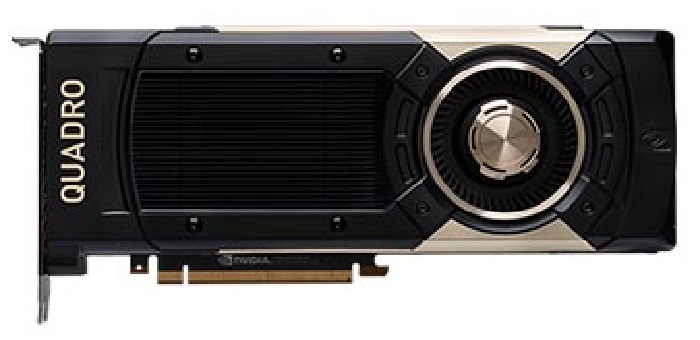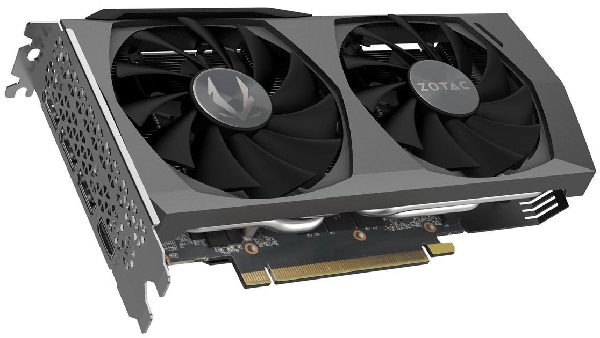Modern video games are increasingly demanding regarding graphics and computational power, requiring high-quality textures, complex visual effects, and smooth frame rates. A powerful GPU ensures that these graphics-intensive tasks are handled efficiently, resulting in a visually stunning and immersive gaming experience.
But, for a workstation build, the GPU’s importance extends beyond gaming. Workstations are designed for tasks that involve computationally intensive workloads, such as 3D modeling, animation, video editing, and scientific simulations. In these applications, the GPU accelerates complex calculations and rendering processes, significantly reducing the time required to complete tasks. Professional software packages like Autodesk Maya, Adobe Premiere Pro, and MATLAB often have GPU-accelerated features that leverage the parallel processing capabilities of modern GPUs.
So, knowing the differences between a workstation GPU and a gaming GPU is important. Since both of these options are designed for completely different applications, you will surely find a lot of reasons to choose one over the other based on your preferences. But before that, let us first try to understand a gaming GPU and a workstation GPU.
Outline
ToggleWhat is a Workstation GPU?

Workstation GPUs have certified drivers that are extensively tested and optimized for professional applications. These drivers ensure stability and compatibility with specialized architecture, engineering, design, and content creation software packages. The certification process guarantees that the GPU and its drivers meet the quality standards required for professional workloads.
Workstation GPUs also incorporate error-correcting code memory, which helps detect and correct errors during data processing. ECC memory is critical for industries where data integrity is paramount, such as medical imaging, financial modeling, and scientific research. It ensures that calculations and simulations produce accurate results without being compromised by memory errors.
What is Gaming GPU?

Gaming GPUs are engineered to provide high graphics performance, enabling gamers to play modern and graphically demanding games at smooth frame rates. They are equipped with powerful processors, often featuring a large number of CUDA cores or stream processors. This increased processing power allows for real-time rendering of complex 3D scenes, high-resolution textures, and advanced visual effects, such as dynamic lighting, shadows, and particle systems.
One of the primary goals of gaming GPUs is to deliver high frame rates, ensuring smooth and responsive gameplay. Higher frame rates result in smoother motion, reduced input lag, and an overall improved gaming experience. Gaming GPUs are designed to handle the real-time rendering requirements of fast-paced games, maintaining high frame rates even in visually demanding scenarios.
Gaming GPUs often come with an aesthetically pleasing design with RGB lighting and under-the-hood customization options. This allows gamers to personalize their PC builds. These visual enhancements contribute to the overall look of the gaming rig and enable synchronization with other RGB components, creating cohesive lighting effects throughout the system.
What are the Differences Between the Workstation GPU and Gaming GPU?
Now that you know what gaming and workstation GPUs are, it is time to put these options against one another and see how they differ. But simply checking the specifications of both options won’t be much of a help. Instead, you should check both options’ output and reliability regarding major factors such as memory type, size, drivers, BIOS, etc. This will help you get a clearer picture of the GPUs and allow you to pick up an option that best suits your needs.
1. Memory Type
One of the key differences between workstation GPUs and gaming GPUs lies in the type of memory they utilize. Workstation GPUs typically use Error-Correcting Code memory, while gaming GPUs primarily employ non-ECC memory. ECC memory incorporates additional error detection and correction capabilities to ensure data integrity. It can detect and automatically correct single-bit errors and detect multiple-bit errors, minimizing the chances of memory-related data corruption.
The use of ECC memory in workstation GPUs is vital for professional applications that require highly accurate and reliable computations. Industries such as engineering, scientific research, financial modeling, and medical imaging often rely on precise data calculations, simulations, and analysis.
In contrast, gaming GPUs utilize non-ECC memory. Non-ECC memory, also known as standard or consumer-grade memory, lacks ECC memory’s error detection and correction capabilities. It is commonly employed in gaming-oriented graphics cards due to its lower cost and wider availability.
For gaming purposes, the use of non-ECC memory is generally sufficient. While gaming requires high-performance graphics processing and fast memory access, the data integrity required is typically lower than professional workloads. Gaming GPUs prioritize factors such as graphics performance, frame rates, and visual quality, which are more directly related to the gaming experience.
2. Memory Size
The differences between workstations and gaming GPUs based on memory size can vary depending on specific models and generations. Workstation GPUs tend to feature larger memory capacities compared to gaming GPUs. This is because professional applications and programs used for such applications often deal with large datasets and complex scenes that require substantial memory resources.
Gaming GPUs generally offer a range of memory sizes, and the optimal memory capacity for gaming depends on factors such as resolution, game settings, and specific gaming requirements. The memory size of gaming GPUs is primarily determined by the demands of modern games and the resolution at which they are played.
Higher-resolution gaming, such as gaming at 4K or ultra-wide resolutions, typically requires more GPU memory to store the higher number of pixels and textures required for rendering. Additionally, the complexity of the game and its graphics settings, including texture quality, anti-aliasing, and visual effects, can influence memory requirements.
3. Driver Support
Workstation GPUs are accompanied by specialized drivers that are extensively tested and certified for professional applications. These drivers are developed with a focus on stability, reliability, and compatibility with software packages commonly used in industries such as architecture, engineering, design, and content creation.
The certification process involves rigorous testing to ensure that the GPU drivers meet the quality standards required for professional workloads. Workstation GPU drivers are thoroughly validated with professional software suites like Autodesk Maya, Adobe Premiere Pro, SOLIDWORKS, MATLAB, and many others.
Gaming GPU drivers emphasize support for the latest gaming titles, graphics APIs (such as DirectX and Vulkan), and gaming-specific features like optimizations for specific game engines, support for virtual reality headsets, and game-specific graphics settings. These drivers often include performance optimizations for popular games and aim to deliver the best possible gaming experience.
While gaming GPU drivers may support some professional applications, they are not certified or extensively tested for the wide range of software packages used in professional workflows. Compatibility and stability with professional software may not be as thoroughly vetted or prioritized as workstation GPU drivers.
4. BIOS
Workstation GPUs typically have BIOS configurations that prioritize stability, reliability, and compatibility with professional applications. The BIOS settings and optimizations are designed to provide a consistent and reliable platform for professionals working on critical projects.
The workstation GPU BIOS may include stricter power limits, lower fan speeds for quieter operation, and optimized thermal management to ensure reliable performance under heavy workloads. These GPUs are often certified for specific workstation platforms, ensuring seamless integration and compatibility with professional workstations and server environments.
Coming to the gaming GPUs, these units have BIOS configurations that prioritize performance, gaming optimizations, and flexibility for enthusiasts and gamers. The BIOS settings of gaming GPUs are typically designed to provide the best possible gaming experience, allowing users to push the performance limits of the graphics card.
Gaming GPU BIOS often includes options for overclocking, allowing users to increase the GPU’s core clock speed, memory frequency, and power limits to achieve higher performance. These options allow enthusiasts to fine-tune their GPUs for maximum gaming performance. However, it’s important to note that overclocking can void warranties and requires careful monitoring of temperatures and stability.
Workstation GPU Vs Gaming GPU – FAQs
Ans: Workstation GPUs are specifically optimized for rendering and visualization software commonly used in professional industries. These GPUs are designed to deliver high-performance and efficient rendering capabilities, allowing professionals to work with complex 3D models, simulations, visual effects, and other visualization tasks. These GPUs also offer larger VRAM capacities compared to gaming GPUs. This increased VRAM capacity enables professionals to load and manipulate large datasets, high-resolution textures, and complex models in real time.
Ans: Yes, gaming GPUs can support multiple GPUs in a single system, a configuration commonly known as SLI for Nvidia GPUs and CrossFire for AMD GPUs. However, it’s important to note that supporting multi-GPU configurations in gaming GPUs has become less prevalent in recent years. NVIDIA and AMD have also shifted their focus towards single-GPU performance improvements and stopped any form of official support previously available for multi-GPU setups.
Ans: Workstation GPU drivers prioritize stability and reliability to ensure uninterrupted operation during critical professional workflows. These drivers are often certified by software vendors for compatibility with professional applications commonly used in industries. You will also find performance optimizations specifically designed to accelerate professional applications. These optimizations can involve accelerated rendering algorithms, improved viewport performance, and better utilization of GPU resources for faster computations.
Ans: The commercial options available for gaming GPUs should not be underestimated. The new generation of gaming GPUs is very powerful and can easily sustain a heavy load of 3 modeling and rendering applications without much trouble. A gaming GPU’s powerful processors and high-performance memory systems can easily handle complex scenes, textures, and lighting effects.
Conclusion
A GPU is crucial in rendering graphics, accelerating computations, and providing an immersive gaming experience. In a gaming PC build, the GPU primarily delivers high frame rates, smooth gameplay, and realistic graphics. On the other hand, in a workstation build, the GPU is optimized for professional applications, such as 3D modeling, rendering, simulation, and visualization, where stability, reliability, and compatibility with specialized software are paramount. In conclusion, we would like to state that while workstation GPUs offer an edge over gaming GPUs in terms of reliability and stability, the new-gen gaming GPU options can handle the tasks for both of these types of applications very well.

